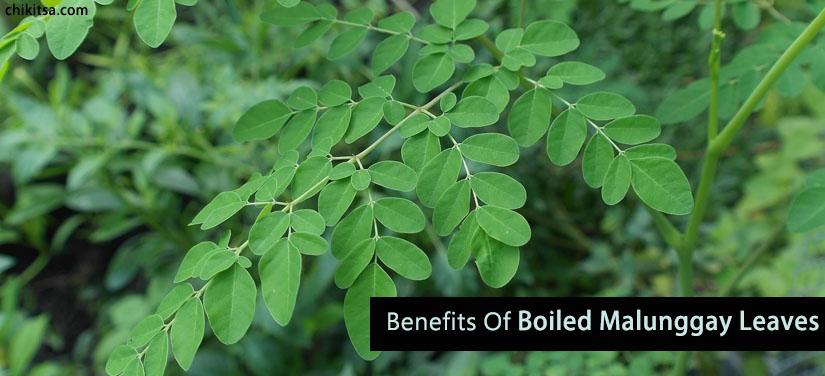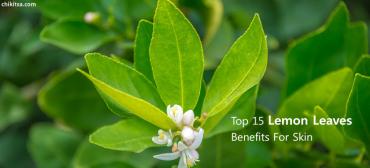Health Benefits Of Boiled Malunggay Leaves

The Moringa tree is found abundantly among tropical parts of the world including India, Pakistan, and Asian countries and in Africa. The Moringa tree is also referred to as “horseradish treeâ€. “kelor tree†or the “drumstick treeâ€. In the Philippines, the moringa tree is also called malunggay.
In the last few years, there has been an increase in awareness regarding the treatment of illnesses with the help of natural remedies over chemical or synthetically prepared medicines.
Moringa tree is one of a kind which provides several nutritional as well as treatment benefits for a wide range of disorders. Various parts of these plant-like fruits, roots, and leaves have been used for its medicinal purposes for quite a long time.
Boiled Malunggay Leaves Benefits
The boiled malunggay leaves have several health benefits. They are a rich source of nutrients, proteins, and antioxidants and have therefore been in use for a very long time for treatment of malnutrition and a variety of other illnesses. The following are some of the boiled malunggay leaves benefits;
- Fresh or even dried malunggay leaves are rich in beta-carotene which is later converted into vitamin A. Therefore, regular consumption of boiled malunggay leaves in known to increase vitamin A levels.
- Malunggay leaves are supposed to contain the highest amount of dietary fiber. Due to the presence of dietary fiber, moringa leaves can also be used for weight loss.
- In the Philippines, malunggay leaves are called “mother’s best friend†as they have been used to enhance the production of breast milk in lactating females and also for the treatment of anemia.
- Since malunggay leaves are rich in antioxidants, they are useful in the treatment of infectious diseases, inflammatory and hematological disorders, and illnesses of the gastrointestinal tract and hepato-renal system.
- Moringa leaf juice is also known to stabilize blood pressure as it contains nitrile, thiocarbamate glycosides, and mustard oil glycosides.
- Roots, flowers, gum, seeds, and leaves of moringa tree have a diuretic effect which in return lowers blood pressure.
- The crude extract of malunggay leaves has a cholesterol-lowering effect.
- Several types of research also claim moringa leaves to have anti-spasmodic and anti-diarrheal effects.
- Contents of malunggay leaves are known to possess anti-cancer and anti-tumor effects.
- Moringa leaf extracts are known to regulate the thyroid gland and have therefore been useful in treating hyperthyroidism.
- Recent reports have published that moringa leaves may be used as a preventive or even for treatment of herpes simplex virus.
- Malunggay leaves are also proved to have an anti-helminthic, anti-bacterial and anti-fungal activity; which means that consuming the leaves may improve the immune status and provide protection against various infections.
[Also Read: Moringa leaves benefits for skin and hair]
How To Prepare Moringa Leaves For Drinking?
Since malunggay leaves are loaded with micro and macro-nutrients, it is being widely used for its health benefits by people globally.
Different Ways To Prepare Moringa Leaves For Drinking
- Collect few moringa leaves and allow them to air dry naturally for a day or so until the leaves turn crisp.
- Small stalks can also be allowed to dry up along with the leaves.
- Grind the dried up leaves and stalks. This can be done manually in a mortar and pestle or a grinder can also be used for this purpose.
- These dried and ground moringa leaves can be stored in tea bags for each use.
- If you do not want to store the ground leaves in tea bags, they can be stored in a container but away from moisture.
You Can Use Moringa Leaves To Prepare Tea In The Following Way
- Boil one cup full of water.
- Once the water is boiled, add a few dried up moringa leaves or ground leaves.
- Let it stand for about 5-10 minutes and then empty the contents into a cup using a strainer.
Preparation Of Fresh Moringa Leaves Tea
- Collect fresh moringa leaves, about half or one cup full. Separate stalk from leaves. To prepare tea from fresh moringa leaves, the stalk need not be taken.
- Boil about 2-3 cups of water in a pot.
- Add fresh moringa leaves (without stalks) into the pot and let them boil for about 5-10 minutes.
- Turn off the stove and let this boiled water with moringa leaves cool down a bit.
- Pour this water into a cup. You can also add some sugar or honey as per preference to enhance its taste.
- The taste of moringa tea can also be enhanced by adding some ginger or a few drops of lemon in it.
Some people also add moringa flowers or seeds to their meals to get the best of this plant. Tea prepared from fresh malunggay leaves provides enough nutrients to keep a person energetic and active throughout the day.
Conclusion
- Due to its abundant health benefits, the Moringa tree is also called the “tree for purifying†or the “nutrition of the tropicsâ€. The powder prepared out of dried malunggay leaves can not only be used for drinking but can also be sprinkled over meals to achieve maximum benefits.
- In the recent past, moringa leaves have been identified to promote healthy weight loss by virtue of its rich fiber content. Also, the antioxidants, flavonoids, and other nutrients present in the leaves, flowers, seeds, and fruits are known to enhance the process of fat loss.
- While on the other hand, Ayurveda researchers have documented that this plant is extremely beneficial in the treatment of malnutrition and anemia. Apart from its benefits related to general well being, malunggay leaves also promote healthier skin and hair following its regular consumption.
- However, special care must be taken by people who wish to consume moringa tea but are already on medications for some pre-existing illness or other systemic disorders, by females who are pregnant or lactating and also in case of children.
- It is a wiser option to consult the doctor before consuming tea prepared out of moringa leaves. This is because certain active principles present within the leaves may cause side effects in such patients or may also interfere with the action of certain medications.









